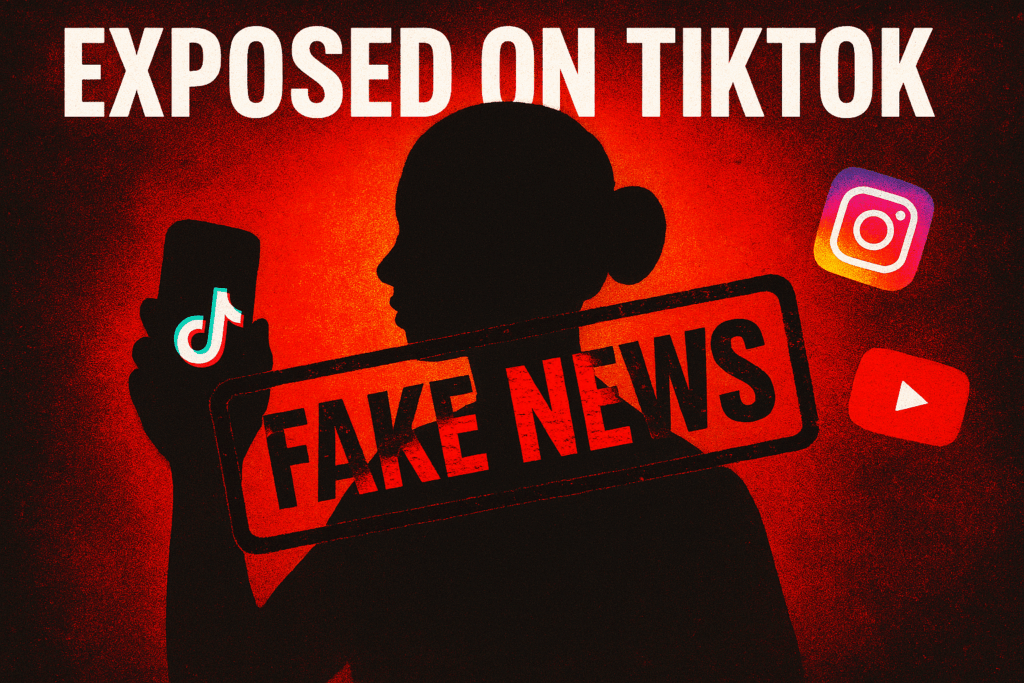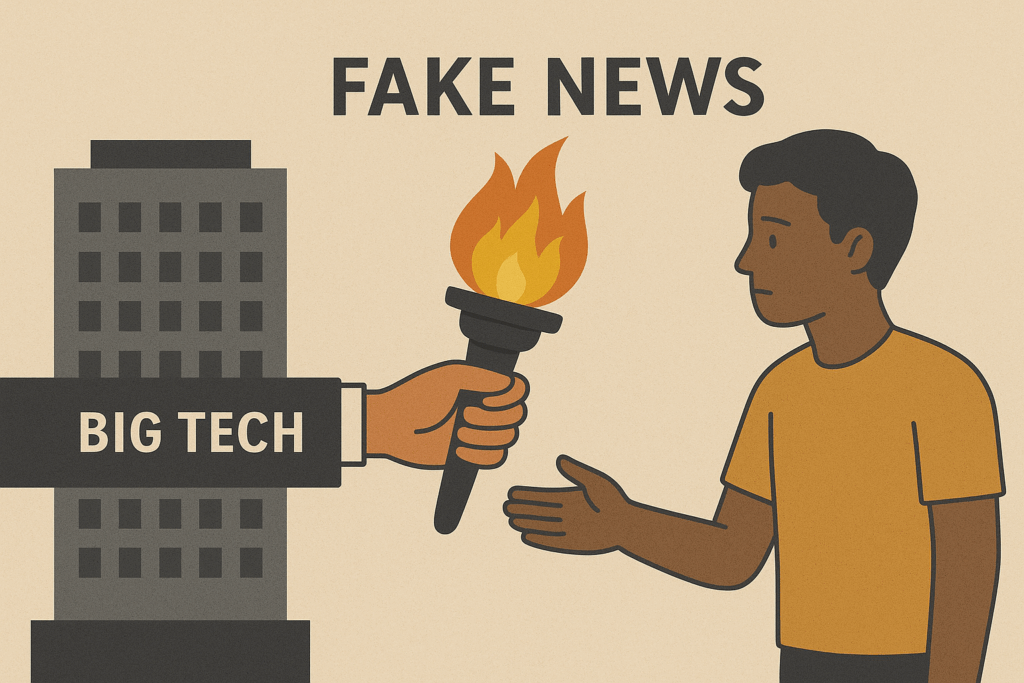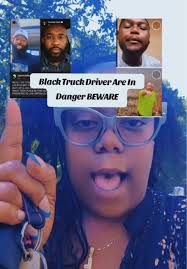

For years, the term “fake news” conjured images of powerful corporate media outlets twisting narratives for ratings, politics, or profit. We grew skeptical of newspapers, cable networks, and tech giants, accusing them of pushing biased agendas. And especially in the era of the pandemic, the skepticism was more than justified. But today, the fake news epidemic has evolved into something far more chaotic: it’s no longer just the domain of big corporations — it’s also being manufactured by everyday people chasing clout on social media. Countless stories going viral are turning out to be completely fake because of the unhealthy rise of internet clout chasers.
From Gatekeepers to Click Chasers

In the past, powerful media conglomerates were the gatekeepers of information. Their narratives, however flawed and dubious, were carefully crafted by professionals with resources and reach. Now, thanks to platforms like TikTok, YouTube, and Instagram, anyone with a phone can go viral, and apparently, some are willing to lie outright to make it happen.
The incentive isn’t always political power or billion-dollar ratings. Sometimes, it’s simply the dopamine hit of likes, follows, and a growing personal “brand.” What used to be called storytelling has in some corners devolved into outright deception-for-profit.
The Case of “Mslive3D” and Eric Darnell

A striking example is TikTok user Mslive3D, who posted a fabricated story about a supposed truck driver named Eric Darnell. The narrative was dramatic, emotional, and designed to sound authentic, complete with a believable racist narrative designed to pull viewers in. Eric Darnell is a black man, and she reported that his lifeless body was found by a tree and rope. The problem? None of it was true.
A shockingly small number of people attempted to verify details and information before sharing and reposting her story. The few that did, this platform included, quickly realized the story was fake. Eric Darnell is a real person. However, he is not missing, dead, nor a truck driver. The tiktoker tried to save face claiming she mixed up the name of the victim. However, that claim was also just as suspiscious. Regardless, the initial content had already spread, pulled in views, and served its purpose: attention. This is confirmation that TikTok has become a breeding ground for everyday opportunists who play on viewers’ emotions with made-up stories.
Why Regular People Are Driving the Fake News Boom
- Low Barriers: Anyone can upload content in seconds, without oversight or fact-checking.
- High Rewards: Viral clips can bring instant fame, sponsorships, or monetization.
- Emotional Engagement: Ordinary users understand what resonates emotionally; tragedy, love, fear, hope, and exploit those themes for clout.
- Distrust in “Big Media”: Ironically, the decline of trust in mainstream outlets makes audiences more vulnerable to accepting “authentic” stories from random influencers.
What This Means for Audiences
Unlike corporations with advertisers to please, individual content creators may not care if their story unravels. By the time the truth comes out, they’ve already banked the attention. In some cases, the exposure from the scandal is worth more than the lie itself.
This represents a new twist in the information crisis: fake news has been democratized. It’s not just elites bending reality; it’s also ordinary people leveraging dishonesty for digital fame.
The lesson from the Mslive3D incident is clear: we can no longer assume that fake news is always a top-down problem. Increasingly, it’s peer-to-peer misinformation, disguised as personal storytelling, grassroots journalism, or viral confessionals.
Audiences must develop the same skepticism toward individual creators as they’ve learned to apply toward mainstream outlets. That doesn’t mean distrusting everything, but it means verifying, questioning, and resisting the urge to share first and think later.
What We Can Do
- Digital Literacy: Audiences must learn to question not just CNN or Fox, but also their favorite TikTok storytellers. Fact-check before sharing. Fact-checking doesn’t mean seeing if mainstream media covers the story but things like deaths or missing people can be easily verified and confirmed.
- Platform Accountability: TikTok, YouTube, and Instagram need stronger detection and flagging for fabricated content disguised as truth. This must be done very carefully not to slip back toward any form of biased censorship. But there needs to be consequences and accountability for things posted that are simply not true. For example, declaring someone dead who is alive, etc.
- Cultural Shift: We must start calling out attention-seeking falsehoods, not rewarding them with views, likes, and follows.
Conclusion
The rise of fake news has entered a new chapter. It’s not just the corporate giants spinning narratives; it’s also ordinary users hungry for followers and digital fame. The Eric Darnell hoax on TikTok wasn’t about politics or propaganda. It was about one creator’s quest for attention. But let’s not single her out either, she’s far from alone, and it’s getting worse by the day.
The big tech corporate powers aren’t entirely off the hook this time either. They created this problem because app platforms want ears and eyeballs all the time, and don’t care from whom, where, or how they get them. And so they’ve deputized and incentivized everyday people, many with no skill sets, to be content-creating factories. What could go wrong?
Fake news used to be a weapon wielded by the powerful. Today, it’s also the tool of ordinary people with an extraordinary lack of integrity.
The rise of TikTok hoaxes like the Eric Darnell story proves that misinformation doesn’t just trickle down from the top anymore, it bubbles up from the crowd. And that may be even more dangerous, because it turns fake news into a crowdsourced epidemic—one we all have the power to fuel or to stop.

Leave a Reply